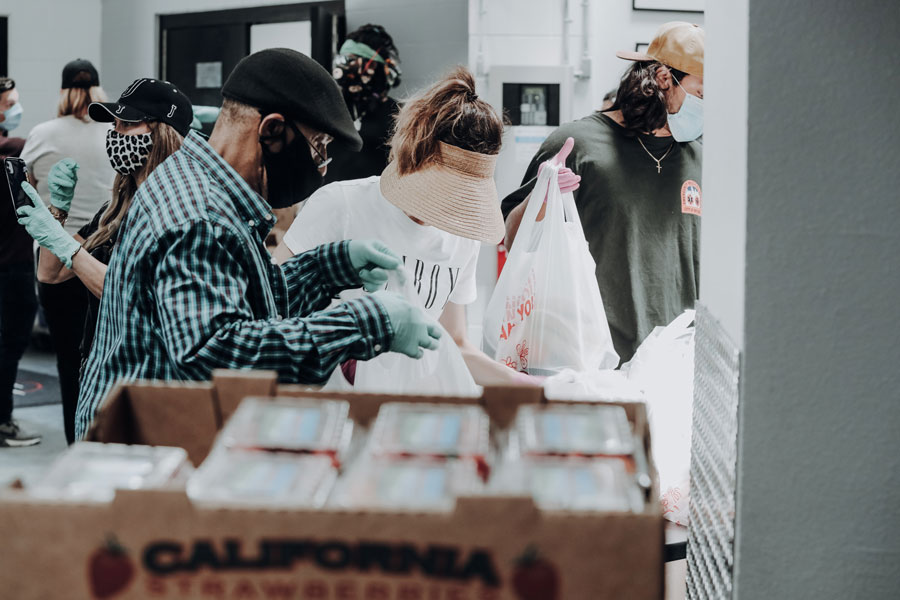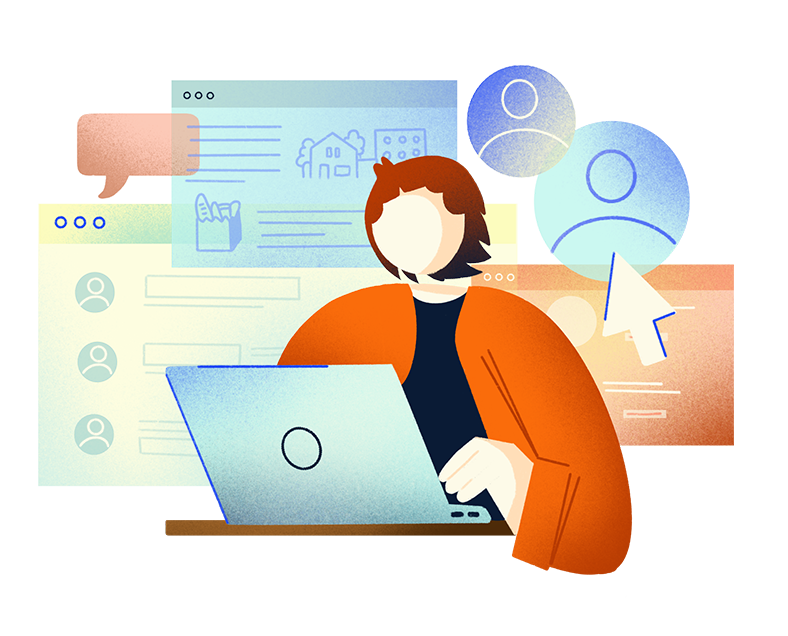BY: SCOTT FORSLUND
The one thing rising faster than confirmed cases of coronavirus worldwide may be the fear associated with the term itself. COVID-19, a term that essentially didn’t exist in our public consciousness three weeks ago, generated 1.4 trillion results in Google search three days ago [3/5/2020].
Perhaps we’ll have a COVID-19 vaccine sometime next year. No vaccine will ever exist to guard against social isolation. But in a time of great polarization and uncivil discourse, the Coronavirus, ironically, could be a force as great as anything to bring us back together.
Of course, at the moment everyone is sort of running in the opposite direction.
We’re brushing up our understanding of terms like social distancing. Rediscovering the significance of the term “rubbing elbows.” Increasingly avoiding large gatherings. Worrying about what comes home on our avocados and our Amazon Prime boxes.
Some of that is good advice, especially while we get a better read on the prevalence of this virus in our communities. It is also terrible advice if we conflate ‘social distancing’ with the need to hunker down, hoard a little, and cocoon until this all blows over.
If in the name of self-protection, we isolate ourselves further from family and community who we need, and who need us, an even bigger community health threat is surely lurking.
The good news: unlike the coronavirus, that’s one threat we have the power to eliminate right now.
As a community, what is our local record for social connectedness?
One answer can be found in the Snohomish County Health & Well-being Monitor, developed by and for the people of Snohomish County by the Providence Institute for a Healthier Community. The community well-being tool was devised to capture the voices of communities across our county and describe our arc of health and wellbeing over time, on terms defined by our community itself.
In nearly a year of community-based participatory research in 2015, involving Familias Unidas, the NAACP, Tulalip Tribes, Minority Achievers Alums, YMCA members, low-income housing residents, seniors, and more, 24 answers emerged to the question of ‘what does health and wellbeing mean to you?”
Those 24 attributes factored down to 6 of what we call ‘Dimensions of Health”: physical health; neighborhood and environment; security and basic needs; work life, learning and growth; mental emotional and spiritual wellbeing; and relationships and social connections.
All six are important, but some may be more ‘equal’ than others. Specifically, if you have thriving relationships and social connections, it seems all the rest may be easier to acquire or preserve.
Yet as important as human connection is, even before this worldwide health scare, our performance as a community, especially in recent years, has been sobering. Between 2017 and 2019, a period when unemployment fell to historic lows and the stock market rose 26 percent, measured wellbeing in Snohomish County fell.
A big contributor was a measurable decline in overall satisfaction with mental and emotional wellbeing, which fell by 2.8%. That was accompanied by a bevy of worrisome signals. It turns out people are getting together 9.8% less frequently with friends and loved ones than two years ago. We’re reaching out to greet our neighbors 7.7% less often. Our reliance on the importance of faith and spirituality communities fell by 11.5%. At an individual level, poor mental health days rose by 27%, and debilitating health days, by 24%. At a community level, our sense of belonging fell by 8.5%.
Those among us experiencing active isolation and othering in the form of discrimination more than doubled, from 12% in 2016-17, to 26% in 2019. That was nearly double – 45 percent – among people of color and people who speak a language other than English at home. And 91% of those who experienced ‘othering’ or discrimination reported that in Snohomish County, acts of discrimination occurred as frequently or more so than the year before.
And therein lies an opportunity shining brightly before us.
What if a month from now, our collective connections with family, friends, and community increased?
At the precise moment when our public health officials are cautioning against gathering in large groups, it is more pressing now than ever to connect or reconnect with family, neighbors, friends, co-workers – as well as those who are not normally visible to us.
Get creative. Go for a walk — and pick up the phone to connect with your Mom, with gratitude that you have one. Drop off some soup, chocolate, and a “neighborly love” note on the porch of a shut-in neighbor. And use this moment freed up from large gatherings to establish or re-establish connections in other ways to the broader community we’re all a part of, and mutually dependent upon.
Here’s one very real example. I have four sinks in my home, and soap for every faucet. I also have several bottles of hand sanitizer. Jim Dean is the executive director of Interfaith Association, a small but mighty organization addressing the needs of local families experiencing homelessness. Jim’s clients don’t have sinks and soap close at hand. And as of this past Tuesday, Jim could no longer find any hand sanitizer on any shelves, anywhere.
How easy to drop off a bottle of hand sanitizer at Interfaith’s offices in Everett for Jim, who can put that to dramatically better use in the hands of a family he serves?
As important as that is the family quietly teetering on the edge, working for an hourly wage in a small business, without the means to go two weeks in quarantine and still pay the rent.
Or an Asian-American business owner, suddenly shunned by white people for nothing other than the color of his skin.
Need to get your creative juices flowing? Jump online at the LiveWellLOCAL.org community resource hub, and type “Shelter.” You’ll get 68 local programs that shelter the homeless among us (including Interfaith). Likewise, typing “Food” turns up 178 local programs; “assistance” turns up 296.
Pick what appeals to you. Take one step per day to establish or maintain an important human connection.
Yes, listen to the warnings, and heed them. Meantime, commit to ward off some of the fear and isolation with one extra daily act of human connection and love.
We don’t need a vaccine for that.



